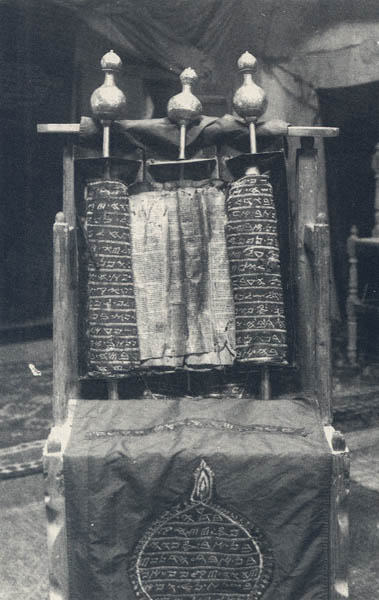Image Details

Courtesy of the Matson Collection, the Episcopal Home
Abisha’s Cryptogram. The Abisha scroll, seen here in an early 20th-century photo by G. Eric Matson, contains a secret message concealed as an acrosticon in its text of Deuteronomy. The message proclaims: “I am Abisha, the son of Pinhas, son of Eleazar, son of Aaron the Priest, on them be the favor of the Lord and his glory—I wrote this holy book in the door of the tent of meeting on Mount Gerizim in the thirteenth year of the dominion of the Children of Israel over the land of Canaan to its boundaries round about. I praise the Lord.”
The letters that form this secret message appear in the words of the text of Deuteronomy, from 6:10 to 13:19. The scroll has been written in such a way that these letters align vertically in the center of each column of text to spell out the message.
Far from pristine in its preservation, the Abisha scroll is a patchwork of repairs and re-inkings. Experts have identified six different scribal hands that worked on the scroll, with writing styles spanning 800 years. The portion of the scroll from the end of Numbers through Deuteronomy (including Abisha’s cryptogram) exhibits the oldest writing style, a style used in Nablus about the first half of the 12th century C.E.
